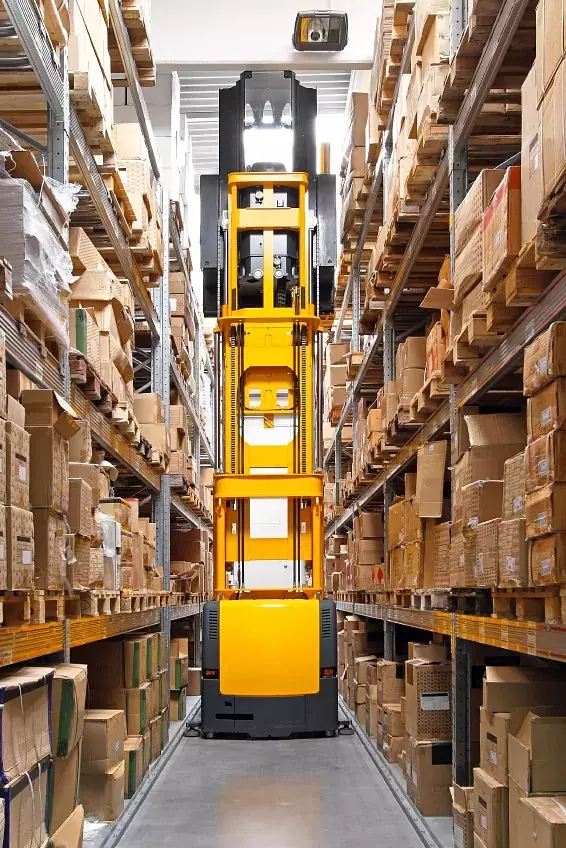 Narrow-aisle forklifts are commonly found in warehouses where narrow aisles and high load stacking demand efficient equipment to transport, arrange, and organize a variety of storage goods. As a result, choosing the right narrow-aisle forklift for your project or business will not only allow you to store and arrange your inventory with great convenience, but also ensure that your goods and the truck itself will not be damaged in the process of lifting and stacking. Because buying a narrow-aisle forklift is no small investment, it is important for you to take a moment to evaluate your personal needs against some of the common forklifts in the market:
Narrow-aisle forklifts are commonly found in warehouses where narrow aisles and high load stacking demand efficient equipment to transport, arrange, and organize a variety of storage goods. As a result, choosing the right narrow-aisle forklift for your project or business will not only allow you to store and arrange your inventory with great convenience, but also ensure that your goods and the truck itself will not be damaged in the process of lifting and stacking. Because buying a narrow-aisle forklift is no small investment, it is important for you to take a moment to evaluate your personal needs against some of the common forklifts in the market:
1. Counterbalance Lift Trucks
Counterbalance lift trucks are the most common warehouse equipment. Their easily adjustable lift, driving speed, and acceleration features make them extremely convenient and adaptable in various circumstances and loads. Despite these advantages, counterbalance lift trucks were designed to thrive in a conventional rack storage system that typically has a 12 foot (144 inches) aisle width. Most storage systems have a much narrower aisle that range from 8 to 10 feet. Additionally, the forks of counterbalance forklift are fixed and cannot perform pivotal functions. Therefore, a counterbalance forklift will not be an ideal pick for people who need to organize and arrange high stacks in a narrow space.
2. Reach Forklifts/Double-Reach Forklifts
Both reach and double-reach forklifts were designed to work in narrow aisle warehouse spaces. The compact body and the outer legs of these trucks also help offset the weight of the loads, allowing them to function well in storing materials in multiple tiers high off the ground.
When it comes to choosing between a reach forklift and a double-reach forklift, we recommend you to pick the latter if your work involves heavier loads, further reaches, and most importantly, racked pallet storage. This is because the outriggers on the double-reach forklifts counterbalance the load weight and gives you the advantage of holding two pallet loads for double racking.
One great drawback is that both reach forklifts are restricted to indoor work and can only travel short distances. This is because these forklifts have low under-carriage clearance that makes them extremely vulnerable to regular shaking. If the surface of your workplace is naturally uneven, you might want to either change the flooring of your workplace or pass this choice to avoid the potential of having to deal with a damaged electric power system.
3. Order Picker Forklifts
Your business demand of stacking items that are 300 inches or higher from floor level will be satisfied with an order picker forklift. Although not able to carry excessive loads, an order picker forklift is ideal for selecting orders and collecting them from multiple tiers. In general, this is an ideal truck for stacking and organizing smaller inventory.
Conclusion
Based on just a brief overview of these forklifts, it becomes apparent that choosing the right narrow-aisle forklift heavily depends on your knowledge of your workplace and business demand. The type of forklift that will meet your expectation is one that will function well in its given environment. Therefore, factors such as aisle width, the typical amount and weight of the load, the height of the stacking, and other business accommodations need to be carefully considered before you make a pick.
As always, we recommend you consult your forklift documentation when making a decision. Many lift truck manufacturers have calculations designed for their vehicles, and their estimations will help you better understand how a potential forklift will satisfy your personal needs.
